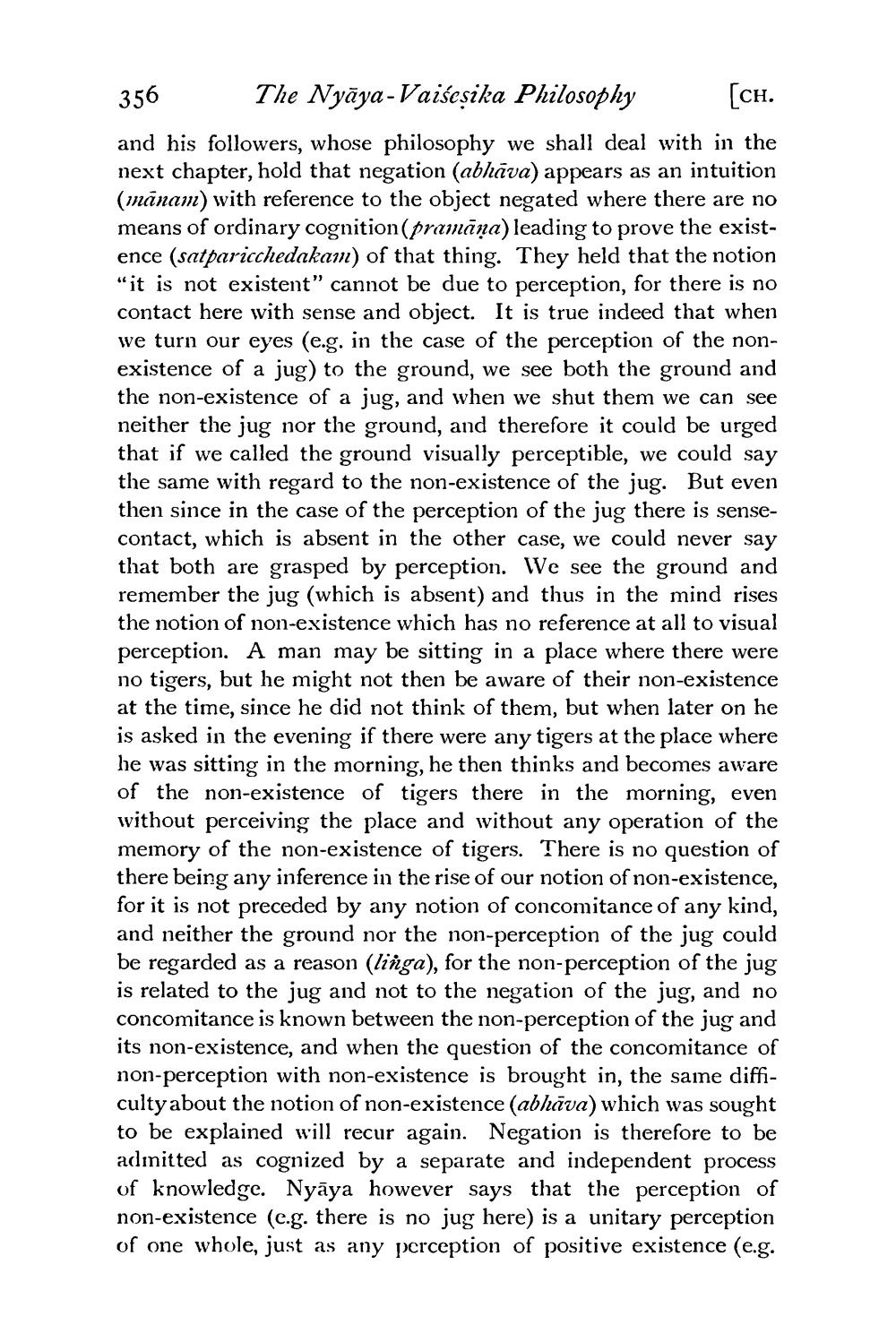________________
356 The Nyāya-Vaišeșika Philosophy [CH. and his followers, whose philosophy we shall deal with in the next chapter, hold that negation (abhāva) appears as an intuition (mānam) with reference to the object negated where there are no means of ordinary cognition(pramāna) leading to prove the existence (satparicchedakam) of that thing. They held that the notion "it is not existent" cannot be due to perception, for there is no contact here with sense and object. It is true indeed that when we turn our eyes (e.g. in the case of the perception of the nonexistence of a jug) to the ground, we see both the ground and the non-existence of a jug, and when we shut them we can see neither the jug nor the ground, and therefore it could be urged that if we called the ground visually perceptible, we could say the same with regard to the non-existence of the jug. But even then since in the case of the perception of the jug there is sensecontact, which is absent in the other case, we could never say that both are grasped by perception. We see the ground and remember the jug (which is absent) and thus in the mind rises the notion of non-existence which has no reference at all to visual perception. A man may be sitting in a place where there were no tigers, but he might not then be aware of their non-existence at the time, since he did not think of them, but when later on he is asked in the evening if there were any tigers at the place where he was sitting in the morning, he then thinks and becomes aware of the non-existence of tigers there in the morning, even without perceiving the place and without any operation of the memory of the non-existence of tigers. There is no question of there being any inference in the rise of our notion of non-existence, for it is not preceded by any notion of concomitance of any kind, and neither the ground nor the non-perception of the jug could be regarded as a reason (linga), for the non-perception of the jug is related to the jug and not to the negation of the jug, and no concomitance is known between the non-perception of the jug and its non-existence, and when the question of the concomitance of non-perception with non-existence is brought in, the same difficulty about the notion of non-existence (abhāva) which was sought to be explained will recur again. Negation is therefore to be admitted as cognized by a separate and independent process of knowledge. Nyāya however says that the perception of non-existence (c.g. there is no jug here) is a unitary perception of one whole, just as any perception of positive existence (e.g.




